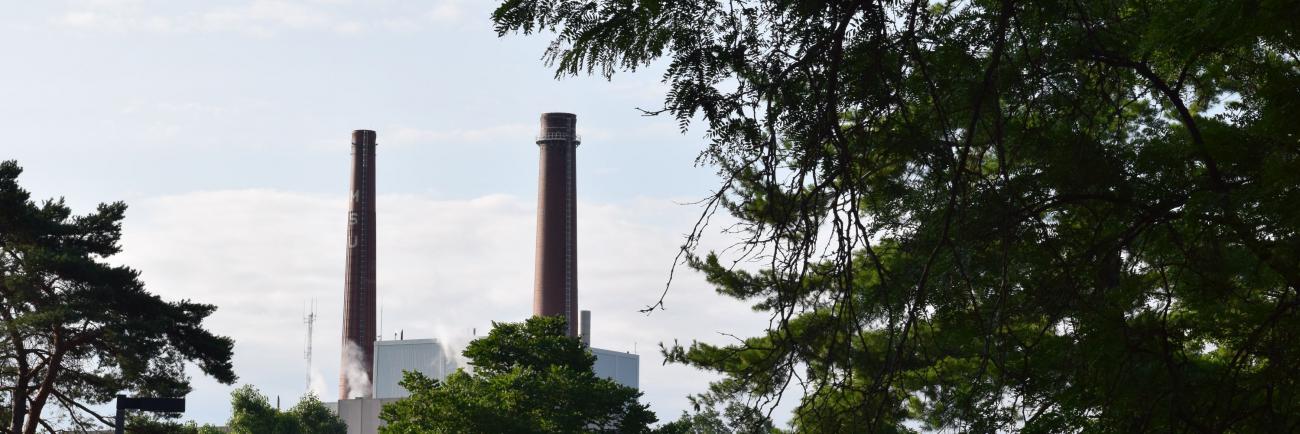Energy Generation

T.B. Simon Power Plant
The T.B. Simon Power Plant is a cogeneration facility producing electrical power and steam for the East Lansing campus, including academic buildings and south campus farms. Since 2016, the T.B. Simon Power Plant operates entirely on natural gas. With a peak generating capacity of roughly 99 megawatts, its six generating units can be activated or deactivated in response to campus demand in conjunction with the solar carports.
In its current configuration, the T.B. Simon Power Plant converts energy from natural gas into steam and electricity, which is used for building functions such as heating or cooling. Steam for use in HVAC and electric power are transmitted through a steam distribution network, which connects to more than 100 MSU buildings.
Solar Carports
MSU's solar carport array is constructed on five of the university's largest commuter parking lots and covers 5,000 parking spaces. The solar carports are designed to deliver a peak power of 10.5 Megawatts and an annual energy output of 15 million kilowatt-hours, which is enough to power approximately 1,800 Michigan homes. The solar array will produce electrical power at the time of day that demand is typically the highest, enabling the power plant to operate more efficiently.
The solar carports advance the university's strategic plan by improving the environment, investing in sustainable energy research, containing rising energy costs and positioning MSU as a leader of sustainable energy. The university plans to purchase all power produced by the solar arrays at a fixed rate through a 25-year Power Purchase Agreement (PPA) with Inovateus, a solar company based in Indiana, and Alterra, a Canadian renewable-energy company.
Energy Transition Plan
In 2009, MSU began developing an Energy Transition Plan (ETP) to meet the growing needs of the campus, changing technologies and evolving regulations. The ETP was first released in 2012 and was reviewed in 2017.
Going forward, the 2030 strategic plan is the university’s guiding document for sustainability goals. It updated the goals from the 2017 document and a strategic plan update report was released in June.
